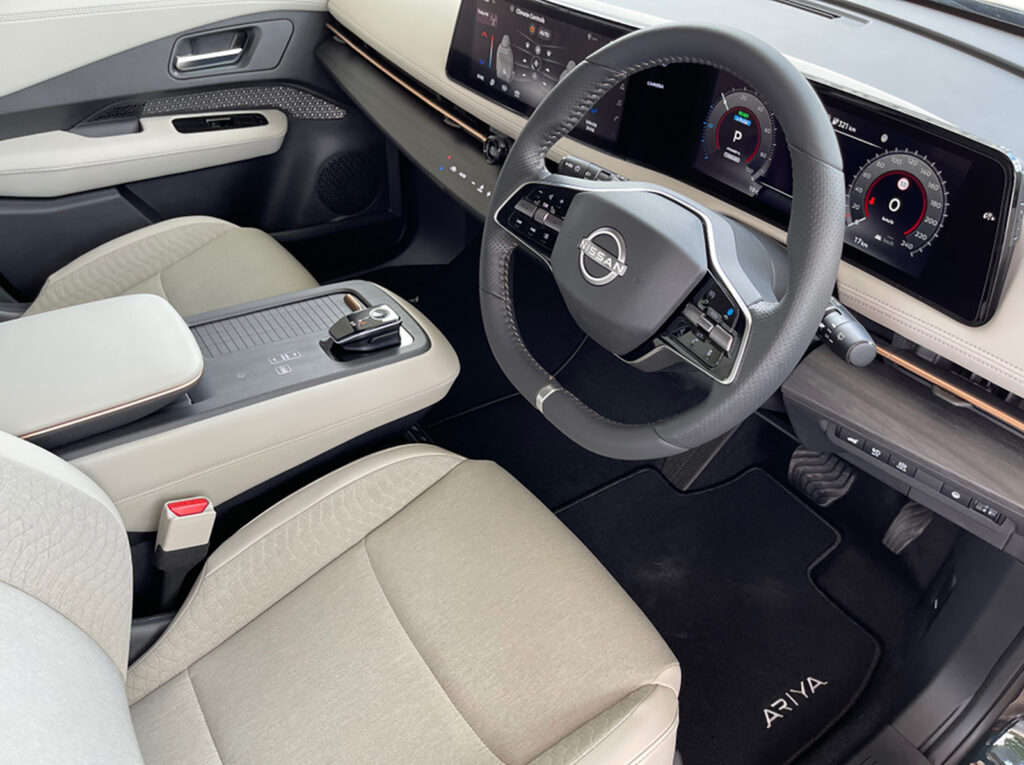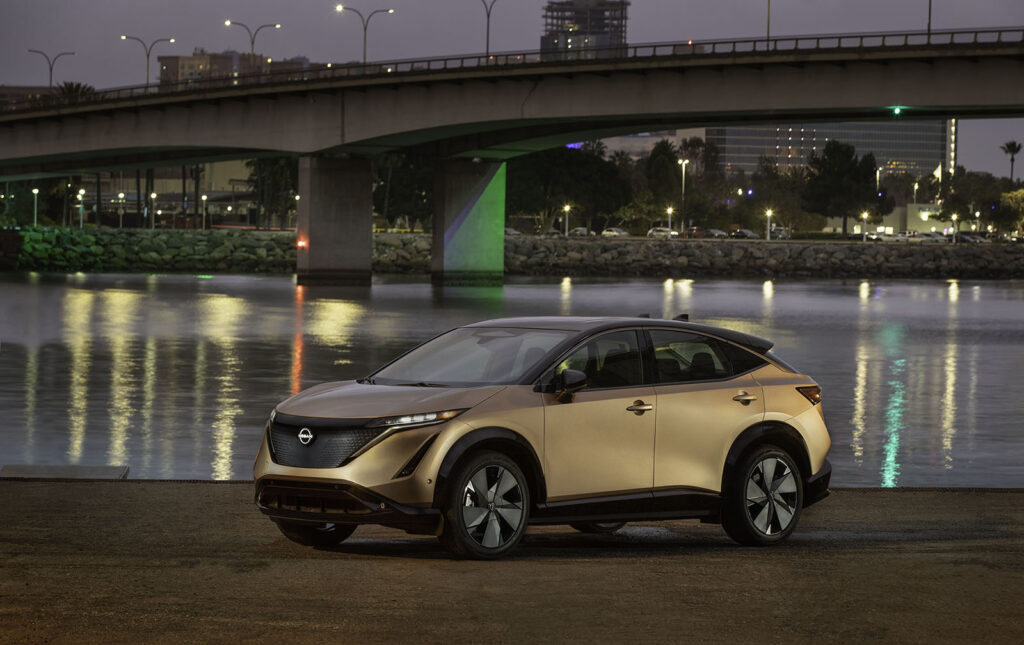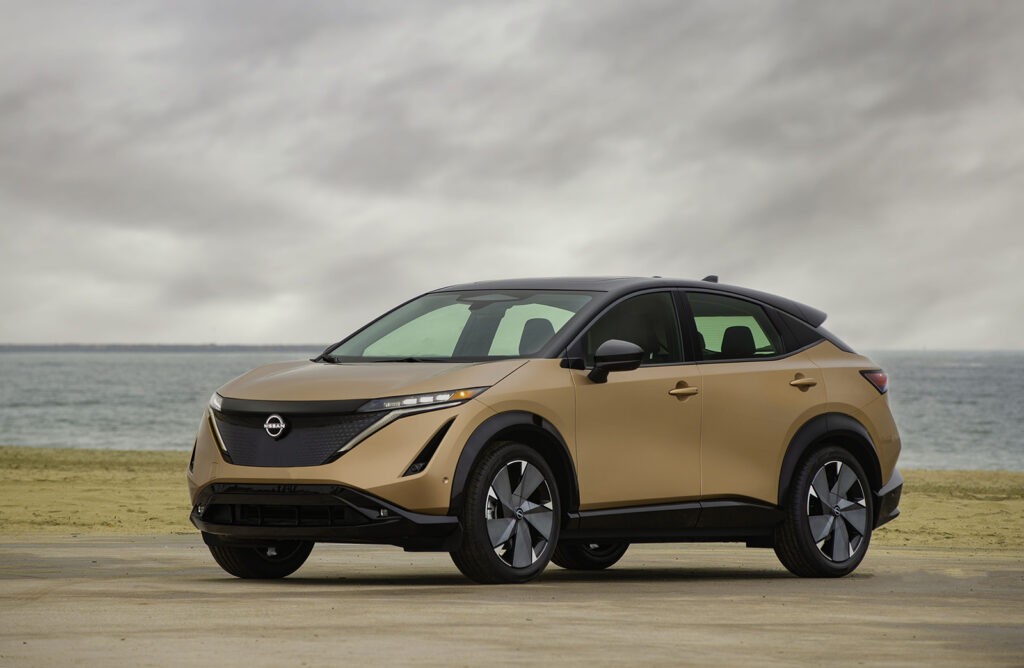
Nissan were the first car company to introduce an affordable electric car to Ireland, but the range in the Leaf was poor. However, I have seen some Leaf cars still being used by taxi drivers in the greater Dublin area.
The Leaf is fine for urban driving, but now Nissan has joined the big hitters in the electric car sector with the Ariya, which is competing with the likes of the Hyundai Ioniq6, Kia’s new EV9, Volkswagen ID.5 and the Skoda Enyaq.
My test car came in very attractive burgundy colour. Inside it was so bright, you could wear sun glasses. The seats were cream and overall the interior was so bright and cheerful.
At night you get to see what initially looked like three air vents lighting up in the dark. They are located on the inside of the front doors and down low near the pedals. But they are not air vents. The system is called the Kumiko Pattern and Nissan are using this new design pattern to convey the Ariya’s Japanese heritage and influences. I haven’t seen anything like it before and it really brightens up the interior at night.

Externally it’s also quite a looker with its sleek lines and smoothed curves. Normally the grille in Nissan cars are attractive, but with the Ariya, Nissan have gone for what is now becoming the norm with EV’s, a bland look at the front.
It’s a massive car with lots of extra leg space available for front seat passengers. There is also plenty of leg and head room for three well-built adults in the back seat.
For front passengers there is a sliding divider which also acts as an arm rest. There is so much leg room in the front that a middle seat may have been possible, but we know that most people are not in favour of three seats in the front. The boot is a decent size, but sadly as is common with all electric cars, no spare wheel is provided.
The dash is dominated by an easy-to-use infotainment screen, and while I liked the old-style button for the radio volume control, the touch-sensitive buttons with haptic feedback on the dash for the A/C controls took a bit of getting used to.
At first you might think the buttons won’t work as they are embedded into the dash, but they do work very well. It’s a really clever way of using and adorning the space below the infotainment screen. These primary controls vibrate when touched, but they are only visible when the car is turned on.

The first two questions I always get asked when driving an electric car are the price and the range. With a 63kWh battery you should get over 320km on a full charge. With an 87kWh battery the range should get up to 530km. The key phrase is ‘up to.’ With press cars, often the range in the first few days can depend on how easy or hard the previous driver drove the car. Obviously that will not happen if you are buying a new car as the range you achieve will depend on your own driving habits.
When Nissan launched their Ariya two years ago the starting price was around €48k. Now they have reduced their prices and you can get an entry level Exchange version for €43,500. Road tax is €120. I think it’s accepted that the price was too high first time round. Now the Ariya offers good value for money.
I liked the high driving position and so did all the family who availed of all that space on a recent trip to the airport. And we all had plenty of room in the boot for luggage.
Seamus Morgan Nissan MD for Ireland said: “We are delighted to secure stock of this much sought after car for 2024. Our pricing is extremely competitive for a family car of this quality. The first thing that you notice when you sit into the Nissan Ariya is its premium feel and spacious interior. The arrival of the Engage grade allows drivers to step up and switch into a more luxurious EV without compromise.
“The Engage version makes it less expensive to drive an EV. The entry price is on a par or less than, the cost of buying the same sized petrol or diesel car. This makes transitioning to zero emissions driving even more attractive and Nissan will continue to lead the way in helping motorists to make that change and to play their part in helping Ireland to meet its climate change targets,” added Seamus.









